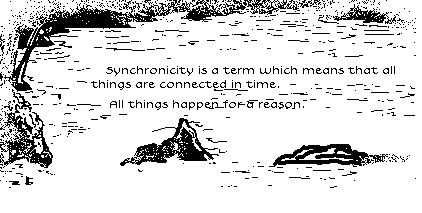 Often we think of something as being an interesting idea or thing to develop, and some time later we see that someone has invented a similar device. Professor Jung called this phenomenon synchronicity: seemingly unrelated events come together. This is what often happens with new inventions.
Often we think of something as being an interesting idea or thing to develop, and some time later we see that someone has invented a similar device. Professor Jung called this phenomenon synchronicity: seemingly unrelated events come together. This is what often happens with new inventions. On April 18. 1877, the Frenchman Charles Cros deposited with the Academy of Sciences a sealed envelope containing the description of a 'paléophone', "a system for recording and reproducing phenomena perceived by the hearing." That same year, the American Thomas Edison invented the phonograph. A celebrated dispute over patents ensued.
Cros was an artist as well as an inventor and not very well at home with set-square, compass and ruler. When describing his inventions he preferred to use coloured inks, to scrawl notes and arrows, and to run over the margin. As a result, what should normally have been a straightforward diagram became a painting in its own right.
Cros was a tireless inventor. In 1864, he described "a system of musical stenography capable of producing an exact graphic representation of music played on keyboard instruments. " The following year he designed a "typographical" machine and took out a patent for an "Autographic telegraph with a coupled action and a single wire." Charles Cros was a freethinker and who at a time when positivism was all the rage, refused to accept any dividing line between his scientific work and such activities as writing poetry and daydreaming. In fact he was born into a family of eccentrics, who he played truant from school and ended up being taught by his father. (cf. literacy). It seems a bit like the morphogenetic fields of Rupert Sheldrake. Similar inventions in different parts of the world have often happened, it would seem that there is an invisible force that makes the time ripe for them. Many creative techniques try to make this happen: e.g. random word provocation (Edward de Bono) works on the same principle. Define the problem and then pick a noun from a newspaper or dictionary and try to relate it to the problem at hand. The creative approach does not allow for balance. It means frustrating a present situation in order to be able to rebuild it in a new, original manner. Behind chaos is a certain order, although we may be unable to see it. When my study, which to the innocent onlooker may be quite a mess, has been cleaned and ordered, I cannot find my things. It often depends on the way you look at it.
Synchronicity can be consciously helped by storing information like Cros in a colourful manner and when in other activities certain aspects will be noticed. It means making use of our intuition, especially important when
- there is a high degree of uncertainty;
- few or no precedents;
- only limited data;
- several alternative course of action;
- urgency;
- high pressure.
It is under these conditions that the intuition can be of great help and logical rational reasoning may not get you anywhere. Seemingly unconnected things can help very much for the whole earth is one great system in which everything is connected to everything as for instance the cutting of the rain forests from Brazil to Borneo is making clear.
It is like considering buying a new car, until that moment you did not see (=consciously notice) the particular type, but once you are contemplating it, it seems to be around a great deal.
Intuition helps to concentrate without focussing too much. It creates attention (see there).
Intuition cannot be taught it should be experienced. Creative thinking means employing all available tools and intuition it a most powerful one.
creativity >> starting now
[back to English Index] [Back to start page] [Back to first entry of this site] [Go to Lilliput start] Go to Brobdingnag start page] [Go to Laputa start] [Go to Houyhhnhm start] [Go to Creative Self start]